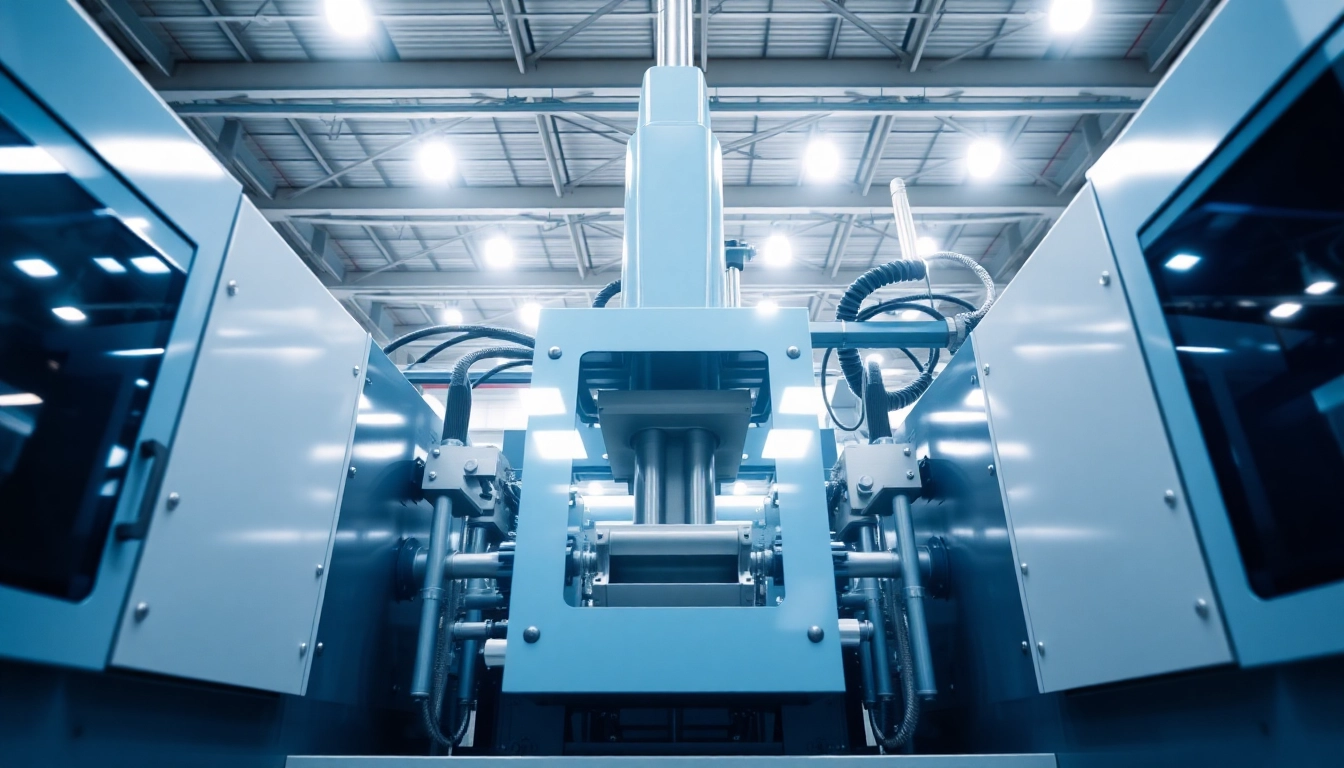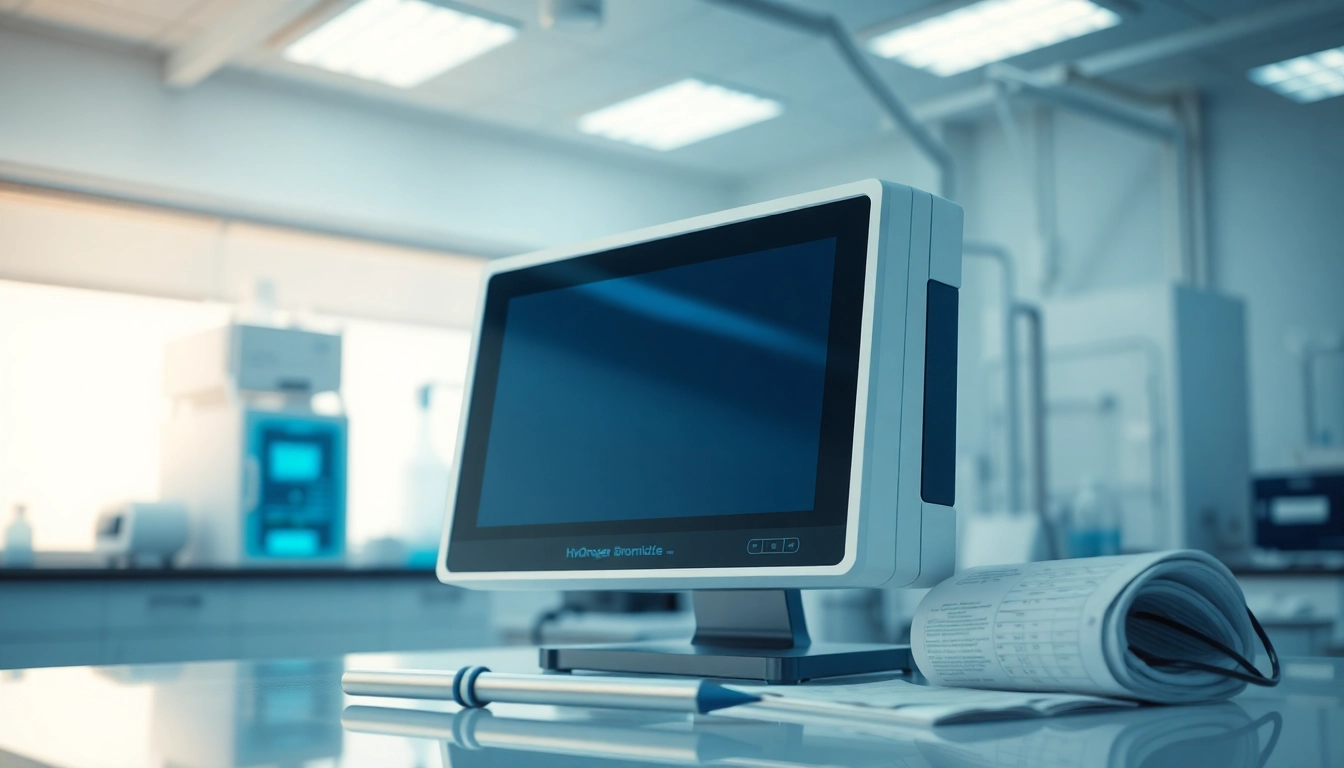Introduction to Blow Molding Machines
Blow molding machines play a pivotal role in the manufacturing of plastic products, serving a wide range of industries from food packaging to automotive components. These machines are designed to create hollow plastic parts through an efficient and cost-effective process. Understanding the dynamic nature of blow molding technology is essential for businesses seeking to optimize their manufacturing processes. Whether you are a seasoned manufacturer or a newcomer to this field, finding a reliable Blow Molding Machine Supplier capable of delivering high-quality equipment is crucial for maintaining production standards.
What Are Blow Molding Machines?
Blow molding machines are industrial devices used to manufacture hollow plastic products by inflating heated plastic into a desired shape using air pressure. The general process involves heating plastic resin until it becomes a molten state, then forming it into a preform or parison. By applying air pressure, the plastic expands against mold walls, taking on the mold’s shape. The three primary types of blow molding processes — extrusion, injection, and stretch — cater to different product specifications, efficiencies, and material applications.
Key Applications in Industries
The versatility of blow molding machines makes them invaluable across numerous sectors. Common applications include:
- Packaging: Bottles, jars, and containers for beverages, cosmetics, and household goods.
- Automotive Parts: Components such as gas tanks, fenders, and ducting systems.
- Consumer Products: Toys, sporting goods, and household items.
- Industrial Goods: Housings for machinery and electronic devices.
Types of Blow Molding Processes
It is essential to understand the different blow molding processes to choose the right machine for specific applications:
- Extrusion Blow Molding: This method involves extruding a parison that is then inflated in the mold. It is primarily used for producing bottles and large containers.
- Injection Blow Molding: This combines injection molding with blow molding. It is suitable for high-precision parts, providing high-quality finishes.
- Stretch Blow Molding: This process stretches the parison to increase strength and clarity, often used for beverage bottles.
Choosing the Right Blow Molding Machine Supplier
Selecting a blow molding machine supplier is a significant decision that impacts your production efficiency and quality. Understanding the factors involved can streamline this selection process.
Factors to Consider When Selecting a Supplier
When looking for a blow molding machine supplier, several critical factors should be considered:
- Experience: Supplier experience in the industry can indicate their reliability and innovation ability.
- Technical Support: Adequate post-sale support and maintenance services are vital for minimizing downtime.
- Custom Solutions: A supplier that offers customized machinery can cater specifically to your production needs.
- Global Presence: A supplier with international operations can offer insights into global best practices.
Evaluating Supplier Credentials and Experience
Research potential suppliers thoroughly. Look for companies with strong reputations and a portfolio of successful installations. Analyzing case studies or testimonials can provide insight into the supplier’s credibility. Relevant certifications such as ISO and industry-specific accolades are also indicators of quality assurance.
Importance of Customer Reviews and Case Studies
Investigating customer feedback and success stories is essential for evaluating a supplier’s performance. Positive reviews can provide confidence in their machine reliability and the quality of their customer service. Ask potential suppliers for case studies that highlight how their blow molding machines have positively impacted other businesses.
Technology Advancements in Blow Molding
Staying updated with technology advancements can significantly influence your manufacturing efficiency and profitability. The blow molding industry has seen remarkable innovations in recent years.
Latest Innovations in Blow Molding Machines
Recent innovations have focused on automation, energy efficiency, and digital integration:
- Smart Manufacturing: Many modern machines are equipped with IoT technology, allowing real-time monitoring of production processes.
- Energy-Efficient Designs: Newer machine models reduce power consumption while maintaining speed and output quality.
- Advanced Materials: Some machines allow the processing of biodegradable or recycled plastics, supporting sustainability efforts.
Benefits of High-Efficiency Machines
High-efficiency blow molding machines offer numerous advantages, including:
- Faster Production Rates: Increased output without compromising quality.
- Reduced Waste: Enhanced precision in manufacturing reduces raw material waste.
- Lower Operational Costs: Improvements in energy efficiency and downtime reduction enhance profitability.
Adopting Eco-Friendly Solutions
As environmental concerns continue to rise, adopting eco-friendly blow molding solutions has become a priority for many manufacturers. Utilizing recycled materials and minimizing energy consumption not only helps in compliance with regulations but also enhances a company’s public image.
Cost Considerations and Budgeting
Cost is a major consideration when investing in blow molding machines. Understanding the various factors that contribute to total ownership costs is essential for effective budgeting.
Understanding Blow Molding Machine Pricing
The pricing of blow molding machines can vary widely based on their size, capabilities, and technology features. Basic models may start at a lower price point, while advanced, automated machines with additional features can represent significant investments. Always base your evaluation on the total cost of ownership, including maintenance and operational costs.
Costs vs. Benefits Analysis
It is vital to conduct a thorough cost-benefit analysis before making a purchasing decision. Consider factors such as:
- Initial investment versus potential returns.
- Break-even analysis based on projected volume and pricing.
- Long-term savings from reduced material waste and energy consumption.
Financing Options for Manufacturers
Many manufacturers offer financing solutions to help businesses acquire blow molding machines. Options may include leasing, loans, or pay-per-use models. Evaluating different financing plans can ensure that your investment aligns with your financial capabilities.
Real-World Case Studies
Analyzing real-world implementations of blow molding machines can provide valuable insights into their effectiveness and the challenges associated with them.
Successful Implementations of Blow Molding Machines
Case studies of businesses successfully utilizing blow molding machinery can highlight best practices and innovations in operational efficiency. For instance, a beverage company integrated a new high-speed blow molding machine that increased their production capacity by 30% while decreasing energy consumption by 15%.
Lessons Learned from Industry Leaders
Industry leaders often share their experiences and lessons learned from transitioning to new blow molding technologies or changing suppliers. For example, a leading cosmetic manufacturer adapted an eco-friendly blow molding machine, resulting in a significant reduction in packaging waste and improved marketability of their products.
Future Trends in Blow Molding Technology
The future of blow molding technology looks promising as it converges with advancements in automation and artificial intelligence. Predictions include the rise of flexible manufacturing systems capable of switching production between different models with minimal downtime, further enhancing efficiency.
Conclusion
In conclusion, deciding on a blow molding machine supplier requires a careful evaluation of available options, bearing in mind the specific needs of your production line. Innovations in technology and a focus on sustainability will guide the future of blow molding processes, making it an ever-evolving field. Using knowledgeable suppliers and leveraging the latest advancements can significantly enhance productivity and profitability.


